When writing a new piece of content, the goal is to rank well for your target keywords. Ideally, those keywords end up being competitive with a lot of search volume. Unfortunately, unless you have an established website, this can be a difficult task.
Does that mean you should turn your focus away from high-competition keywords? Not at all. It just means you need to use them in moderation and set your expectations appropriately.
If your focus isn’t going to be on highly competitive keywords what should you do? You should work on finding low-competition keywords instead.
What Are Low Competition Keywords?
Low-competition keywords are search queries that have a much smaller number of websites attempting to rank in SERPs. Because of the low competition, it’s typically easier to rank well no matter what your domain authority might be.
Search for the Easy Wins in SEO First
If you’ve just started your website then ranking well for just about anything is going to be difficult. Until you’ve had the chance to do some link-building you should avoid high-competition keywords and go after the easier wins.
When doing your keyword research, look for high search volume, low competition keywords. This is going to be your bread and butter and allow you to see some organic search traffic start trickling in.
How to Find Low-Competition Keywords
Are you ready to learn how to find high search volume, low competition keywords? Follow along as we walk you through everything you need to know.
1. Decide on a Topic
The first thing you need to do is sit down and think about who your target audience is. Let’s assume you’re an online retailer of pet products. Think of some things that your customers might be looking for. Write down a handful of ideas. Here are a few that come to mind:
- Dog Food
- Cat Food
- Dog Toys
- Cat Toys
- Dog Beds
- Dog Crates
Now that you have your list it’s time to move on.
2. Use a Keyword Research Tool For Keyword Ideas
Now that you have your topics, it’s time to start looking for low-competition keyword ideas. Load up whichever keyword tool you like to use. For this article, I’m going to use Semrush.
Start by opening up the Semrush Keyword Magic Tool. Grab the first topic idea from the list above, dog food. This is going to be your seed keyword.
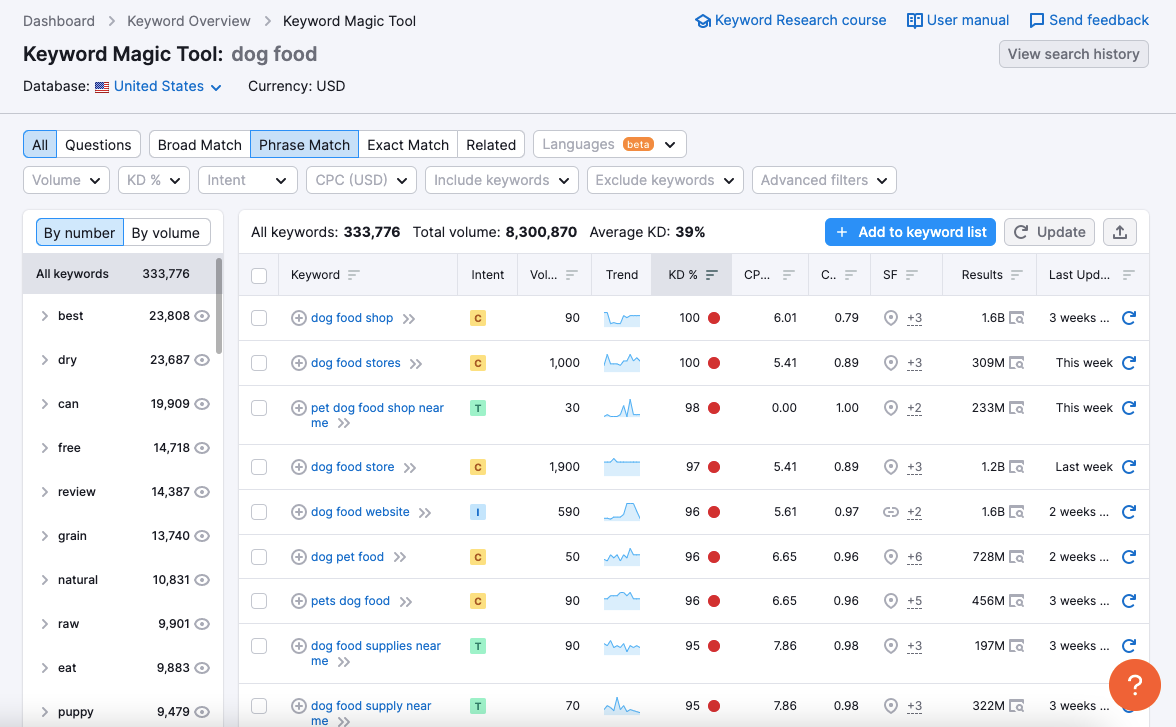
The Keyword Magic tool will give you a list of keyword phrases that include your seed keyword. As you’re looking at the list of keywords, pay attention to the KD%. This is going to be the keyword difficulty score. The higher the number, the more difficult it will be to rank well for a particular keyword.
3. Filter Out High Competition Keywords
The next thing you want to do is filter out anything over a specific keyword difficulty score. I chose to focus on keywords with a KD% score of 29 or below. Any search term that falls into this group would have a good chance to rank well even for a newer website.
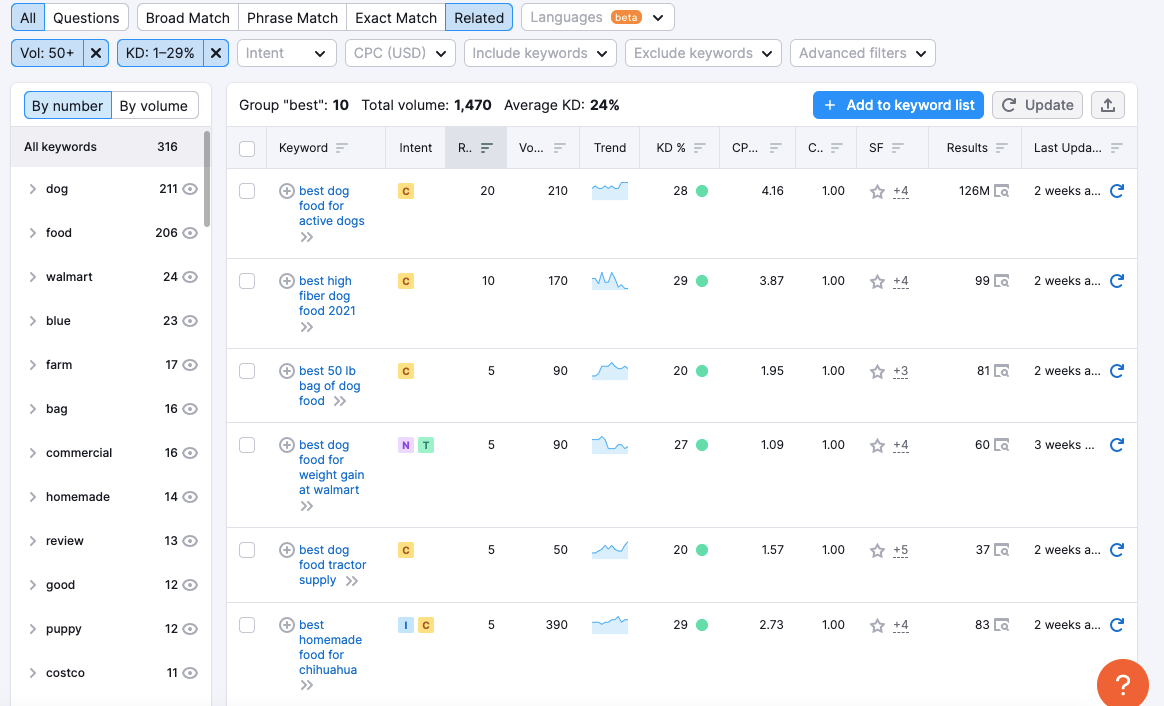
As you can see from the image above I found several search terms that have low keyword difficulty and monthly search volume of over 200. Based on this, you could probably write articles on the best dog food for active dogs and the best homemade food for a chihuahua and be able to rank them fairly quickly.
Understanding Keyword Difficulty
If you’re new to putting together a content marketing strategy and SEO then you might not be 100% clear on what keyword difficulty is. It’s pretty simple and straightforward. Keyword Difficulty is how difficult it is for a website to rank on the first page of search engine results pages (SERPs).
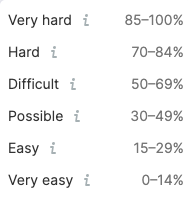
Looking at the image above you can see that the higher the KD%, the more difficult it will be to rank well in search results. If you’re a new blog or don’t have a lot of authority yet, I always recommend sticking with the bottom two levels (29 and below). These are going to be low-competition keywords, and most will have low search volume. However, they’re going to give you the best chance to rank well and begin driving some organic search traffic.
Once your site begins to grow and you have higher domain authority (DA), then you can start writing content around keywords that have a higher KD%. Just remember that with a higher KD%, you’ll likely need a few more backlinks to the page.
Understanding Search Intent
You’ve found a list of low-competition keywords that have good search volume and a manageable keyword difficulty score. You’re ready to start building out content, right? Wrong.
Over the past couple of years, Google has put a greater emphasis on search intent. They want to make sure the user is being shown content in SERPs that matches up closely to the intent of their search query.
There are four main types of search intent:
- Navigational
- Transactional
- Informational
- Commercial
So what does this mean for you? It means you need to be mindful of search intent when you’re deciding the keywords to focus on. You don’t want to write an educational article on a topic when most of the search results are populating transactional content.
Not sure what the user intent is for a particular keyword? Here’s a great guide to follow.
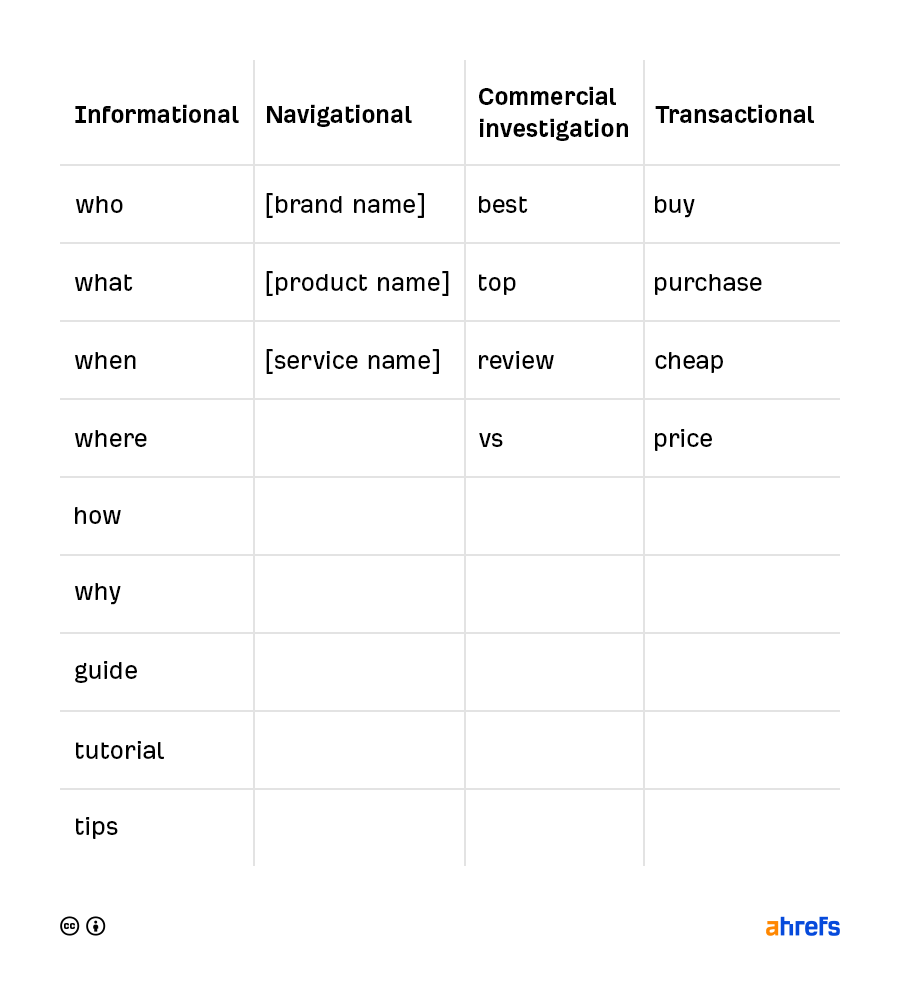
Image Credit: Ahrefs
The Manual Process for Finding Low Competition Keywords
If you’re just getting started you might not have the money available to spend on a tool like Semrush. Not a problem. It’s going to be a little more time-consuming but you can still get the results you need.
To start you’ll want to add the Chrome Extension Keyword Surfer. This helpful extension was created by the same company as one of my favorite SEO tools, Surfer.
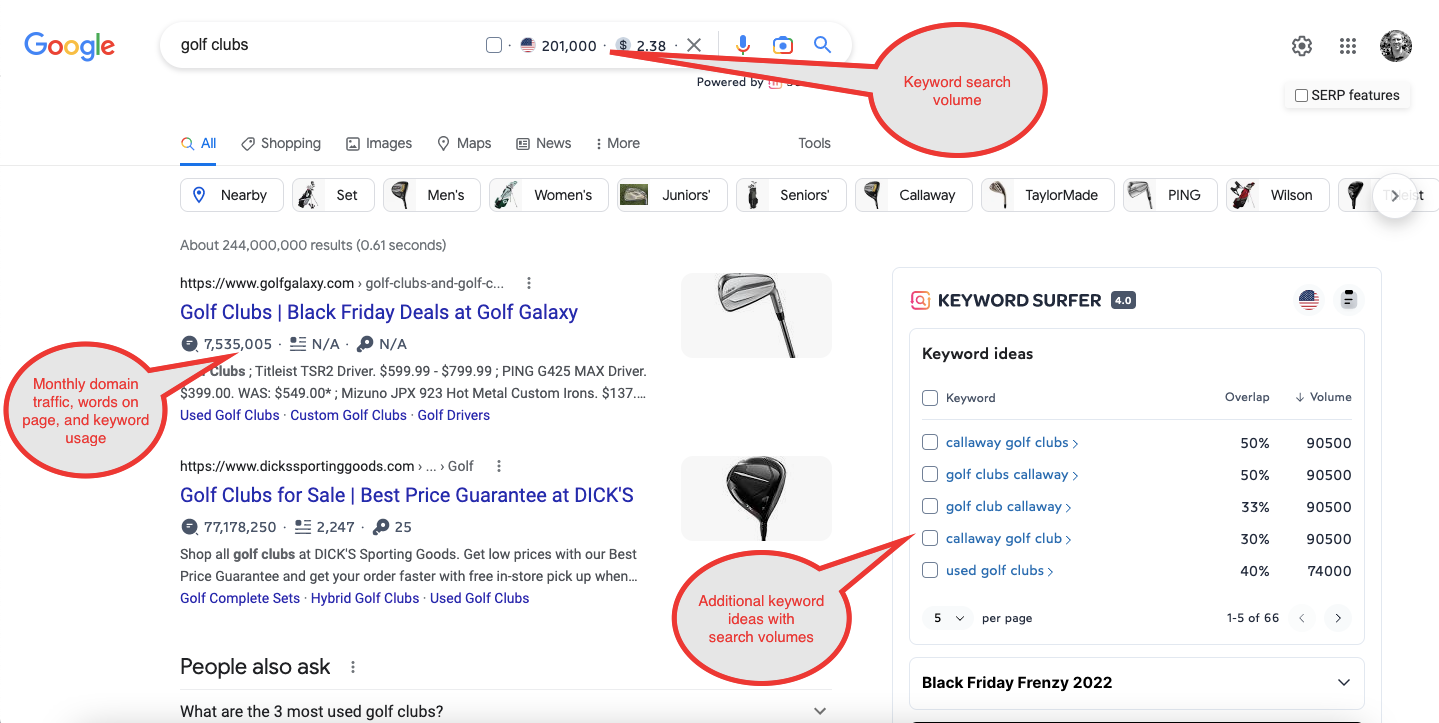
To show you how this tool works I did a Google search for golf clubs. I want to find low-competition keywords that I can use to rank fairly quickly. Next to the Google search bar, you’ll see that the term golf clubs has a monthly search volume of 201,000. That alone tells you that its keyword competition is going to be pretty high.
Next, we’ll look at the right section of the page where you’ll find related keyword ideas. These are all relevant to the primary keyword, golf clubs. Within this list, you’ll see the monthly search volume. The only issue with this is that you still don’t know if they are low competition keywords or not.
So here’s what you’ll want to do to figure things out. If you click on one of the additional keyword ideas, it will lead you to a new Google search page. From there you’ll need to start looking at the different results.
Next to each, you’ll find out how much monthly traffic the domain receives. As you can see in the image above Golf Galaxy and Dicks Sporting Goods get 7 million and 77 million monthly visitors respectively. That means it’s going to be pretty tough to knock them out of the top two spots.

However, if you see pages listed on the first page of SERPs that only have 5,000 or even 30,000 monthly visits, your chances go way up.
Doing things this way is going to be a little more time-consuming than looking at KD% scores on Semrush, but you’re still going to be able to find low-competition keywords.
The Bottom Line
Understanding how to do keyword research is important if you want to grow your website. The last thing you want to do is spend all your time writing content around a competitive keyword. Search engines aren’t going to want to show your content.
Instead, by finding long-tail keywords that have low competition, you’ll have a much better chance to show up high in Google searches which could mean more revenue for your business.






